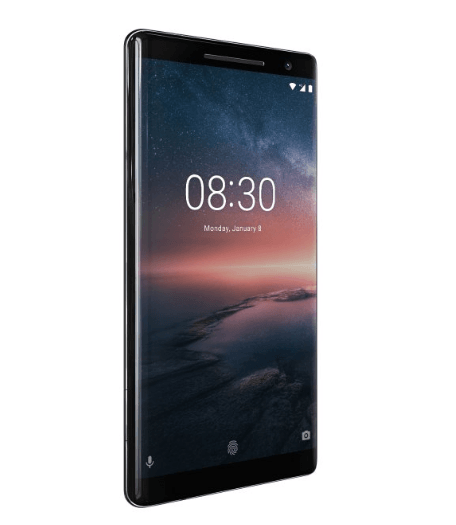The Nokia 8 Sirocco was unveiled by HMD Global at the Mobile World Congress (MWC) on Monday. The Sirocco is entirely a glass affair with a minimal stainless steel chassis covering the sides. Also, HMD has located the fingerprint sensor at the back of the phone to minimize the bezel area and offer a more contemporary look to the phone.
Before Nokia, Apple also used a steel frame in the iPhone X, but at a considerably higher price. The Nokia branded handset will sell for 749 euro ($921; £659), when it is released in April.
“History has shown that an awful lot of people like to carry their phone in their back pockets, which has often led to them getting out of shape,” said Ben Wood from the CCS Insight consultancy, according to the BBC.
The Nokia 8 Sirocco will run the unadulterated Android Oreo version in contrast to other OEMs, which make changes in the operating system, and thus, are often subjected to heavy criticism. Further, the Sirocco re-introduces the Pro Camera mode that was originally offered by Nokia. This mode allows users full manual control over the camera while taking pictures, notes the BBC.
Further, the Nokia handset comes with a 5.5-inch QHD pOLED display with 3D Corning Gorilla Glass 5. Powered by an octa-core Qualcomm Snapdragon 835 SoC, Sirocco sports 6GB of LPDDR4X RAM. The front camera is integrated with 5-megapixel sensors along with the foxed focus lens, f/2.0 aperture, and 1.4-micron pixels.
It comes with a 12-megapixel wide-angle sensor on its primary rear camera, with f/1.75 aperture and 1.4-micron pixels. It also holds a 13-megapixel telephoto lens capable of providing 2x optical zoom, featuring f/2.6 aperture, and 1-micron pixels. The dual rear camera setup also sports an LED flash, as well as, Zeiss optics.
The Nokia 8 Sirocco will come with 128GB of inbuilt storage (no micro SD top-up facility). Other specifications are 4G VoLTE, Wi-Fi 802.11ac, Bluetooth v5.0, GPS/ A-GPS, and NFC, ambient light sensor, barometer, digital compass, accelerometer, fingerprint sensor and proximity sensor. It measures 140.93 x 72.97 x 7.5mm.
HMD also introduced an upgraded version of a popular 90’s curved model, the Nokia 8110, which made its appearance in the movie – The Matrix. However, unlike in the movie, the cover does not slide on its own but rather has to be moved by hand.
HMD Global told the BBC that they did this to justify the original design, but one expert says it has been done to keep the price low at somewhere around 79 euros ($97; £69). “But the reality is that if you’ve got to build a phone for a certain price point, that level of mechanical complexity would have made it too expensive,” said Wood.
The Nokia 8110 4G, popularly known as the Banana phone, is a feature phone and thus, hosts a few basic apps on its Kai Operating system, including Google Assistant, Google Maps and Facebook. Other popular apps like Twitter, WhatsApp or Snapchat would not be available.
Ian Fogg from the IHS Technology consultancy noted that HMD Global started shipping the Nokia smartphones internationally in the last seven months of 2017, and has already delivered more than 8 million smartphones during that period, according to the BBC. This suggests that in terms of volume “it’s already ahead of HTC, ahead of Sony, and ahead of Lenovo – all brands that have not had a period of absence from the market.”





